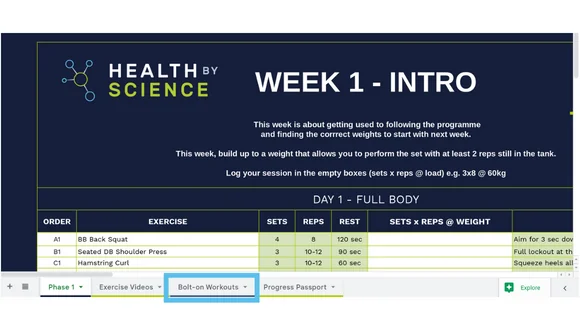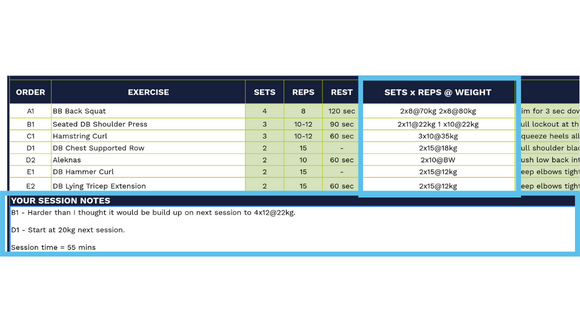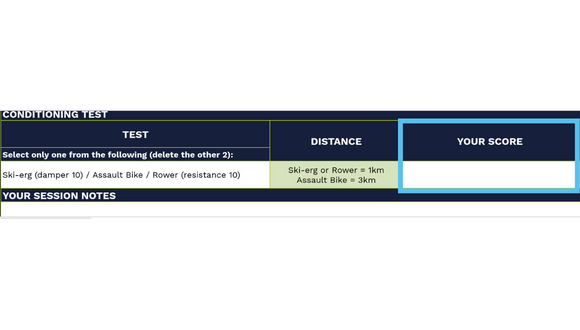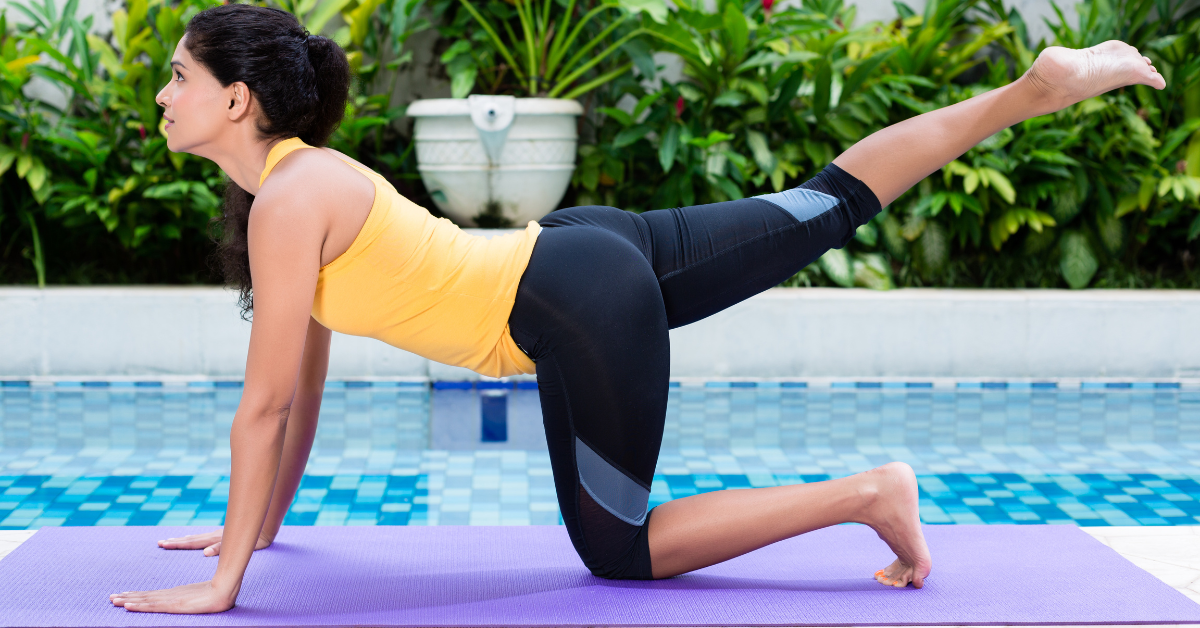Your Complete Rugby Strength Workout Plan
The guide you need to get stronger, be faster, and improve your Rugby game.

Strength training is key to improving your performance on the rugby field. However, it can be hard to know where to start and what exercises you should do.
A rugby strength workout plan is a great way to get in shape for the rugby season, and can be a fantastic complement to services like Personal Training for tailored guidance and program adjustments specific to your needs.
Rugby is a physically demanding sport, and players need to be strong and powerful to be successful. The key to a successful rugby strength workout plan is to focus on compound exercises that work for multiple muscle groups at the same time.
These exercises include squats, Deadlifts, presses, and rows. By working for several Muscle Groups at once, rugby players can build the strength and power they need to dominate on the rugby field.
In addition, rugby players should also focus on plyometric exercises that help to improve explosiveness and speed. These exercises include box jumps, medicine ball throws, and sprints.
By incorporating a rugby strength workout plan into their training regimen, rugby players can take their game to the next level.
This guide contains everything you need to know about strength training specifically for rugby players including a free sample program that has worked wonders for our clients.
Here’s what’s coming up…
– What Are The Four Phases of Elite Rugby Strength?
– How to Organise Your Training Week
– How to Track Your Progress
– What Do You Need to Get Started?
LEVEL UP WITH THE RUGBY STRENGTH WORKOUT PLAN
Introducing the Rugby Strength Workout Plan!
The Rugby Strength Workout Plan has been designed and battle-tested by our team of Sport Science and Strength & Conditioning experts specifically with rugby players in mind.
With our help, you will become bigger, faster, and stronger – ready to take your performance to the next level. Our guidance and coaching will help you set personal bests each and every week!
The Four Phases To Elite Rugby Strength
The Rugby Strength Workout Plan coaches you through 4 ‘Phases’, with each one building on the last to ensure you keep making progress all year.
Phase 1 – Preparatory – Develop a solid foundation and build habits that will ensure you make progress throughout the program.
Phase 2 – Accumulate – Introduce more complex training strategies. Learn specific techniques to maximize your strength and muscle gain.
Phase 3 – Intensify – Ramp things up and develop explosive power alongside unstoppable conditioning.
Phase 4 – Refine – Use the knowledge and experience you have learned through the program to refine your training and optimize your strength, all under the guidance of our expert strength coaches.
Your Rugby Strength Workout Plan Explained
If you’re looking to get stronger for rugby, the Rugby Strength Workout Plan is the perfect place to start. Our simple but highly effective training system will help you achieve your goals in no time. Here’s a guide to help you understand some of the commonly used terms and techniques.
Exercises
Some names may be confusing or new to you. That’s why we have videos for every exercise in the ‘exercise videos’ tab within your program here. We have also provided you with suggested substitutions should you need to swap an exercise, including the Haka because we all know that’s the secret to Kiwi success…

Reps
A repetition (rep) is one completion of an exercise. A repetition maximum (1RM) is your personal best or the most you can lift once in a single repetition of an exercise.
Therefore, a 3RM is the most you can lift and successfully perform 3 repetitions with proper form.
Whenever you see rep ranges e.g. 8-12, this is a repetition window to stay within. If you’re able to complete all reps and sets at the top end of the rep range, increase the weight.
Sets
A set is a series of repetitions performed sequentially. For example, if the program prescribes Barbell Back Squat for 4 sets of 5 reps, this means you’ll perform 5 squats 4 times in total, resting between each round. In total, you’ll be doing 20 Squats.
Rest Periods
There are a lot of factors that go into increasing strength and muscle growth, and rest periods are one of them.
Depending on the phase you are in and the exercise you are doing, sometimes you may want to fatigue a muscle by limiting rest periods, and other times you may want ample rest to allow for a fuller recovery.
Make sure you check the recommended rest time for each exercise and use a watch or timer to hold yourself accountable.
You will have a set rest period on some exercises and in others, you will have to perform in a circuit fashion.
For example, in a series where you see A1, A2 & A3, do one set of A1, one set of A2, and then one set of A3 before resting and repeating for the required sets.
Warm-Ups
Rugby players looking to get bigger, faster, and stronger should begin their training sessions with a well-programmed warm-up.
This will help increase your body temperature, improve your short-term mobility and refine your technique.
The final part of the warm-up should prepare you for a full-body training session. This can be done by starting with general mobility drills, before progressing to the barbell.
3 rounds of:
A1. Spiderman rotations x8/side
A2. Supermans x8/side
A3. Squat to crawl x8/side
Then…
B. The first barbell exercise of the program x 12 reps @ 20kg
Then…
C. Slowly work up to ~50% of your first working weight over 2 sets for 6 reps
Finally…
D. Build up to your first working weight over another 1-2 sets for 4-6 reps.
Organising Your Week
This rugby-specific program is designed to be completed at least 3 days per week. As a general rule, we recommend not doing more than 2 days of rugby strength training in a row to optimise your recovery. To further enhance muscle recovery and prepare your body for intense rugby training, consider incorporating Sports Massage into your regimen.
However, we encourage you to target other areas of rugby fitness on days you are not completing the rugby strength program. For example, you could complete a rugby mobility workout or rugby skills session on your off days from the program.
Below is an example of a weekly training schedule using the Rugby Strength Workout Plan:

Below is an example of a weekly training schedule using Rugby Strength Workout Plan along with other training:

Met-Cons
If you’re looking to boost your conditioning and overall training load for rugby, then Metabolic Conditioning circuits are a very useful tool. These workouts help develop muscular endurance whilst targeting your energy systems – meaning you’ll be finishing sessions off stronger than ever before.
Met-cons are short, time-efficient workouts that will be progressed by increasing time, the number of exercises, and the complexity of the exercises. So make sure you stick to them as best as possible and expect to see your conditioning re-test times improve and with it your ball carrying!

Bolt-On Rugby Workouts
Your Bolt-on Workouts are optional and can be found in one of the sheets at the bottom of your program.

These haven’t been strictly programmed, however, they are a very useful tool for increasing your workload across 3 separate facets of your training:
#1. Upper Body Hypertrophy
#2. Lower Body Hypertrophy
#3. Conditioning (short duration-high intensity and long duration-medium intensity).
So on weeks when you feel you can dedicate more time and energy to training, pick an area you need to work on and select one of the many bonus workouts.
Logging Your Sessions
Not logging your sessions is where most rugby players tend to go wrong.
Logging your performance is key to ensuring that you have an understanding of what weights to select for the following week and to view your progress throughout the program.
Without logging your progress, you are leaving your results to chance. It is key that rugby players write down the reps and weights they used for each set of each exercise. An example workout log including session notes is shown in the Red boxes below:

Tracking Your Progress
If you’re looking to get bigger, faster, and stronger, then tracking your progress is key. By keeping track of how you are adapting to the program, you can see just how far you have come. This will act as a motivation booster as you progress through each phase of the program. Luckily for you, we have simplified your progress into two areas which can both be found in Your Progress Tracker:
- PR Log Sheet
- Milestones Checklist
The PR Log Sheet will be updated each time you perform a 3-rep max test. The milestones checklist can be updated whenever you feel ready to attempt one of our 15 physical fitness milestones.
Strength Testing
Rugby players need to be strong in order to perform at their best. This means that they need to regularly test their strength so that they can identify and work on their weak areas. Strength testing can also help rugby players track their progress and ensure that they are getting the most out of their training.
Rep Max Protocol:
Step 1. Estimate a light warm-up weight & complete 6
Step 2. Rest 1-2 mins
Step 3. Repeat Steps 1 & 2 three times, adding 5-10kg onto your bar each time, or if this is too much, 5-10% of the current weight on the bar.
Step 4. Increase the weight to a near-max weight and complete 3 reps.
Step 5. Increase the weight to a max weight and complete 3 reps. Did you manage to complete the 3 reps? If yes, go to Step 6A. If no, go to Step 6B.
Step 6A. Reduce the weight by 2.5-10kg and try again.
Step 6B. Increase the weight by 2.5-10kg and try again.
Step 7. Repeat Step 6A or 6B until you have hit your 3-rep max with good technique. Record the weight you lifted in your Progress Tracker.
Conditioning Testing
Conditioning testing is important for rugby players who want to be quicker. Rugby players need to be able to sprint quickly and change direction quickly, so it’s important to test their conditioning and see what areas they need to improve in. Sprinting, agility, and change of direction drills can help improve rugby players’ speed and agility.
Step 1. Select one of the following depending on what your gym has available:
- Ski-erg for 1km
- Rower for 1km
- Assault Bike for 3km
Step 2. Perform 5 minutes at a low speed/intensity, gradually getting slightly quicker each minute. In the final minute, you should be working at about 60-70% of your max speed. Ensure the resistance or damper setting for the Ski-erg or Rower are at the highest level (Level 10).
Step 3. Rest for 3 minutes.
Step 4. Perform the test, by pacing yourself at around 70% of your max speed. As you get closer to the distance, increase your speed until you are working maximally. Sustain this until you have hit the required distance.
Step 5. Log your progress in the box on the program.

What Do You Need to Get Started?
Below are the essential and optional things you need to start getting bigger, faster, and stronger.
ESSENTIAL
Access to a barbell, plates, dumbbells, kettlebells, weights bench, and pull-up station.
If you don’t have access to any of these pieces of kit then check out the ‘exercise videos’ tab on your program spreadsheet for our recommended substitutions.
OPTIONAL
Squat Shoes – These can aid your performance in a squat by giving you a raised heel and a solid base of support to push into.
Chalk – To help your grip with your deadlifts.
Lifting Belt – To help you brace during barbell back squats and deadlifts.
How Much Weight Should I Start With?
If you’re looking to increase your rugby strength, size, and power, then you need to be following a specific training program. However, most programs out there will prescribe a weight that you should be lifting – which may not be suitable for you.
With the Rugby Strength Workout Plan, we want to put you in charge and give you a framework to use so that you can achieve your goals safely and effectively. As long as you stick to the following guidelines then you will ensure you minimize your risk of injury and maximize your results. For comprehensive injury assessment and rehabilitation, our Physiotherapy team is here to support you.
We always recommend “too light” versus “too heavy” to build your technique first. It is a lot easier to finish a set feeling it was too light and increase it for the next set, rather than selecting a heavyweight and executing the exercise with poor technique or not completing the target sets and reps.
If you want to get bigger, faster, and stronger, we recommend taking this approach for at least the first week of the Rugby Strength Workout Plan program and for any rugby strength exercises you are unfamiliar with.
When Should I Increase the Weight?
Now that you have completed a few sessions and are happy with your ‘starting weights’ you may be wondering when and how to progress. Before you increase the resistance of an exercise you should be at the top end of the rep range. For example, the program prescribes; Dumbbell Shoulder Press for 3 sets of between 8-12 repetitions.
So, if you are ready to increase the weight you are using. How much weight should you add?
You should always add the minimum amount of weight you can, even if you think you can lift more. The minimum amounts will lead to more consistent progress.
Dumbbells usually increase in around 2kg increments.
This may not seem like a big jump but if we take the shoulder press as an example. In this exercise you use 2 dumbbells, so going from 10kg to 12kg means a total increase of 4kg (2 dumbbells) which is a jump of 20%!
Always keep in mind the below guidelines for progressions:
Barbell = Increase by 2.5kg – 5kg
Dumbbells = Increase by 1 – 2.5kg (the increment will depend on your gym’s dumbbells)
Check Your Technique
Video analysis is an often overlooked way of improving rugby performance. Our rugby experts are here to give you detailed feedback on how to improve your rugby lift. Send in your video, which should be shot from the side.
To get free feedback on your lifts, simply record a short video of yourself performing your chosen rugby strength exercise and send it to [email protected]
LEVEL UP WITH THE RUGBY STRENGTH WORKOUT PLAN
Build Your Rugby Power with the 4 Phases of Elite Strength Training





